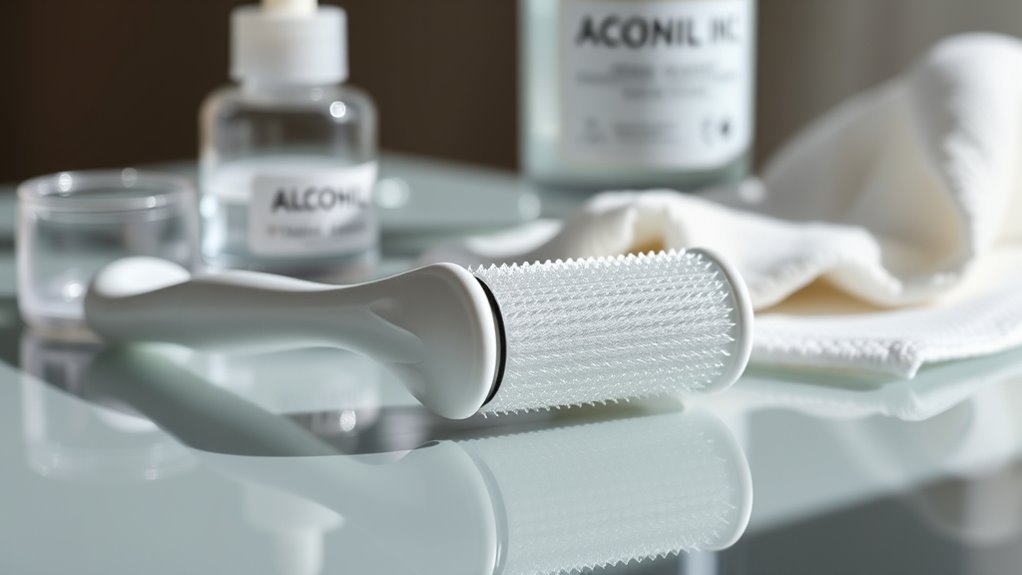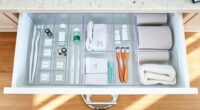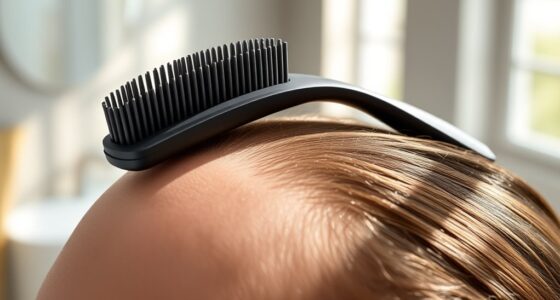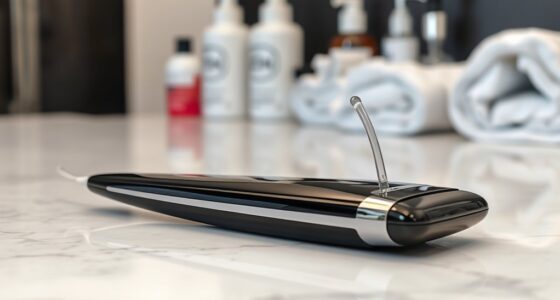To guarantee safe microneedling, always wash your hands thoroughly before handling your roller to prevent bacteria transfer. Disinfect your device by soaking it in at least 70% isopropyl alcohol for 10 minutes and let it air dry on a clean surface. Before using, cleanse your skin gently to remove dirt and oils. After your session, rinse and disinfect the roller again, store it properly, and avoid touching your face unnecessarily. Keep these hygiene rules in mind, and you’ll maximize safety and results.
Key Takeaways
- Always wash hands thoroughly before handling the microneedling roller to prevent bacteria transfer.
- Disinfect the roller in ≥70% isopropyl alcohol for 10 minutes before each use.
- Cleanse skin with a gentle cleanser to remove dirt and oils prior to treatment.
- Rinse and re-disinfect the roller after use, then store it in a clean, dry environment.
- Avoid touching or applying products to the skin for 24 hours post-treatment to reduce infection risk.
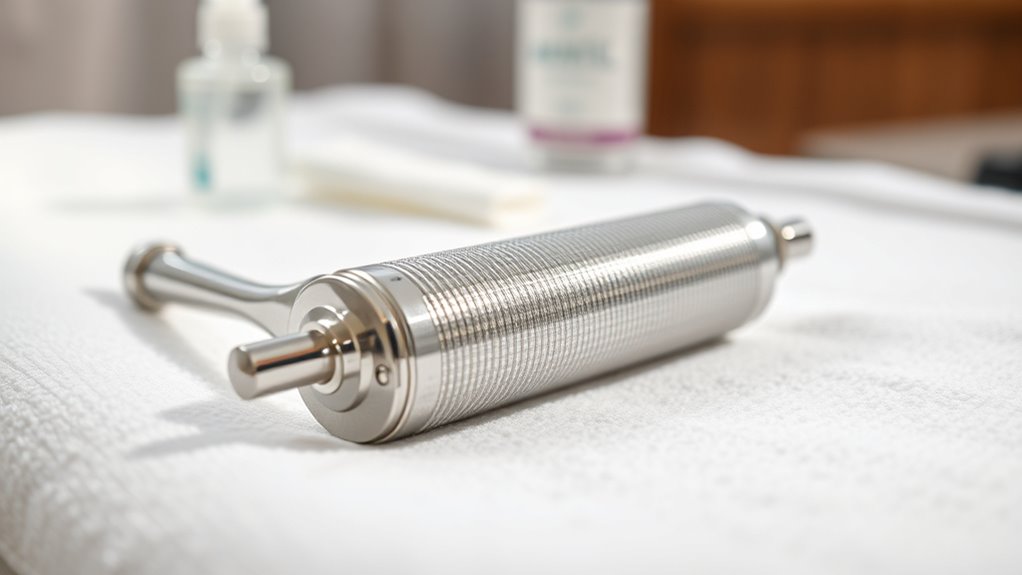
Are you curious about how microneedling rollers can transform your skincare routine? If you’re exploring this popular treatment, understanding proper hygiene is essential. These tiny tools create micro-injuries on your skin to stimulate collagen production, but they can also carry bacteria and dirt if not properly cared for. Neglecting hygiene rules can lead to infections, breakouts, or worse, prolonged skin issues. That’s why maintaining strict hygiene standards should be your top priority before, during, and after each use.
Proper hygiene with microneedling rollers prevents infections and skin issues, ensuring safe and effective treatments.
First, always start with clean hands. Wash them thoroughly with soap and water before handling your microneedling roller. This simple step prevents transferring bacteria onto the device and your skin. Next, ensure your roller itself is sanitized. Before using it, soak the roller in a disinfectant solution like isopropyl alcohol (at least 70%) for about 10 minutes. This kills germs that could cause skin irritation or infection. After disinfecting, let the roller air dry on a clean paper towel, avoiding any contact with unclean surfaces.
When it’s time to use the roller, make sure your face is freshly cleansed. Use a gentle cleanser to remove dirt, oil, and makeup, because any debris left on your skin can get pushed deeper during rolling, increasing the risk of infection. Avoid applying heavy creams or oils beforehand, as they might clog your pores or interfere with the sterilization process. If you use serums or topical treatments, opt for those specifically formulated for microneedling, and wait until after your session to apply them.
Post-treatment hygiene is equally critical. After using the roller, rinse it with warm water and re-soak it in disinfectant for another 10 minutes. Do not share your roller with anyone, and store it in a clean, dry container to prevent dust and bacteria buildup. Be cautious with your skin afterward; avoid touching your face unnecessarily and refrain from applying makeup or harsh skincare products for at least 24 hours to minimize irritation and contamination.
Frequently Asked Questions
Can Microneedling Rollers Be Shared Safely?
No, you shouldn’t share microneedling rollers safely. Sharing can transfer bacteria, viruses, or fungi, increasing infection risks. Always use your roller exclusively to protect your skin’s health. If you must share, thoroughly disinfect the roller between uses with alcohol or sterilizers, but personal use is strongly recommended for safety. Keep your roller clean, store it properly, and never share it with others to avoid complications.
How Long Should I Wait Before Reusing My Roller?
You should wait at least 24 hours before reusing your microneedling roller. This gives enough time to thoroughly clean and disinfect it, reducing the risk of bacteria buildup and infection. Make sure to wash the roller with warm water and a gentle cleanser, then soak it in isopropyl alcohol for about 10 minutes. Proper hygiene guarantees safe and effective treatments each time you use your roller.
Are There Specific Cleaning Products Recommended for Rollers?
Did you know that using the right cleaning products can extend your roller’s lifespan by up to 30%? For best results, stick to alcohol-based solutions like 70% isopropyl alcohol or a gentle disinfectant recommended by your dermatologist. Avoid harsh chemicals, as they can damage the needles. After each use, soak your roller in the disinfectant for about 10 minutes, then rinse with sterile water before air drying.
Can I Use a Roller on Active Acne or Skin Infections?
You shouldn’t use a microneedling roller on active acne or skin infections. Doing so can spread bacteria, worsen inflammation, and cause scarring. Always wait until your skin heals completely before considering microneedling. If you’re unsure about your skin’s condition, consult a dermatologist. Prioritize hygiene and avoid using your roller on problematic areas to prevent complications and guarantee safe, effective treatment.
How Often Should I Replace My Microneedling Roller?
You should replace your microneedling roller every 3 to 6 months. Imagine using a roller with dull or bent needles, which can cause skin damage or infections; that’s why timely replacement is essential. For example, Sarah noticed persistent redness after a few months, prompting her to switch her roller. Staying proactive guarantees your skin stays healthy, safe, and benefits from ideal microneedling results.
Conclusion
Remember, a microneedling roller can transform your skin, but neglecting hygiene can undo all your efforts. Think of it like a delicate garden—you wouldn’t water weeds, just as you shouldn’t skip cleaning your roller. While the process boosts your confidence, poor hygiene risks infections and setbacks. So, enjoy the benefits of smoother skin, but handle your roller with care—cleanliness isn’t just a rule, it’s your skin’s best friend. Stay safe, stay radiant.
